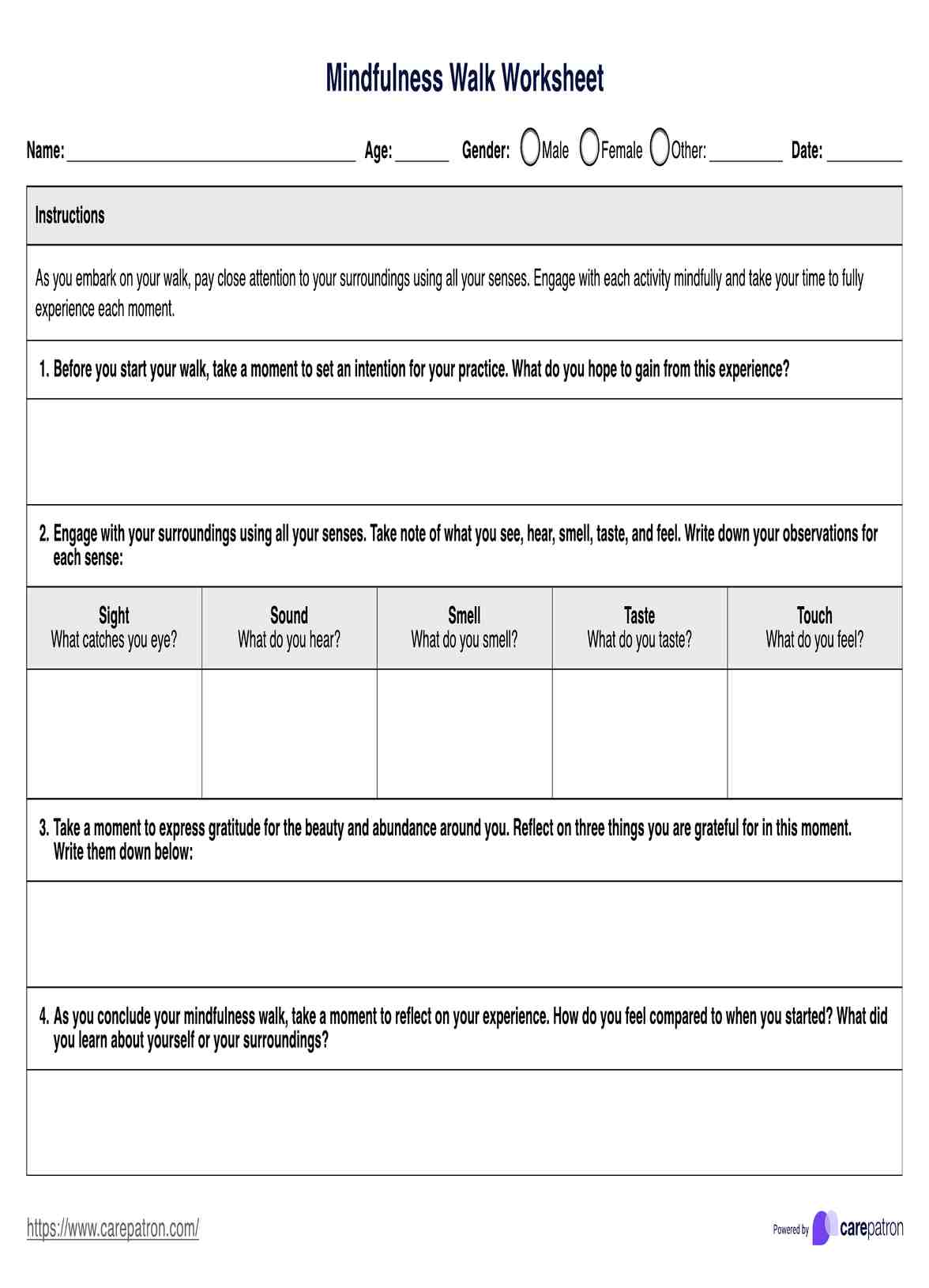Anyone can! It's suitable for all ages and fitness levels.

Mindfulness Walk Worksheet
Take a break and focus on the present. Download our Mindfulness Walk Worksheet for your mindful walking sessions.
Use Template
Mindfulness Walk Worksheet Template
Commonly asked questions
You can use it to de-stress, improve focus, or connect with nature. Try it during a lunch break, after work, or even on a weekend hike.
The worksheet can guide a short 10-minute walk or a more extended exploration. It's all about what works for you.
EHR and practice management software
Get started for free
*No credit card required
Free
$0/usd
Unlimited clients
Telehealth
1GB of storage
Client portal text
Automated billing and online payments











